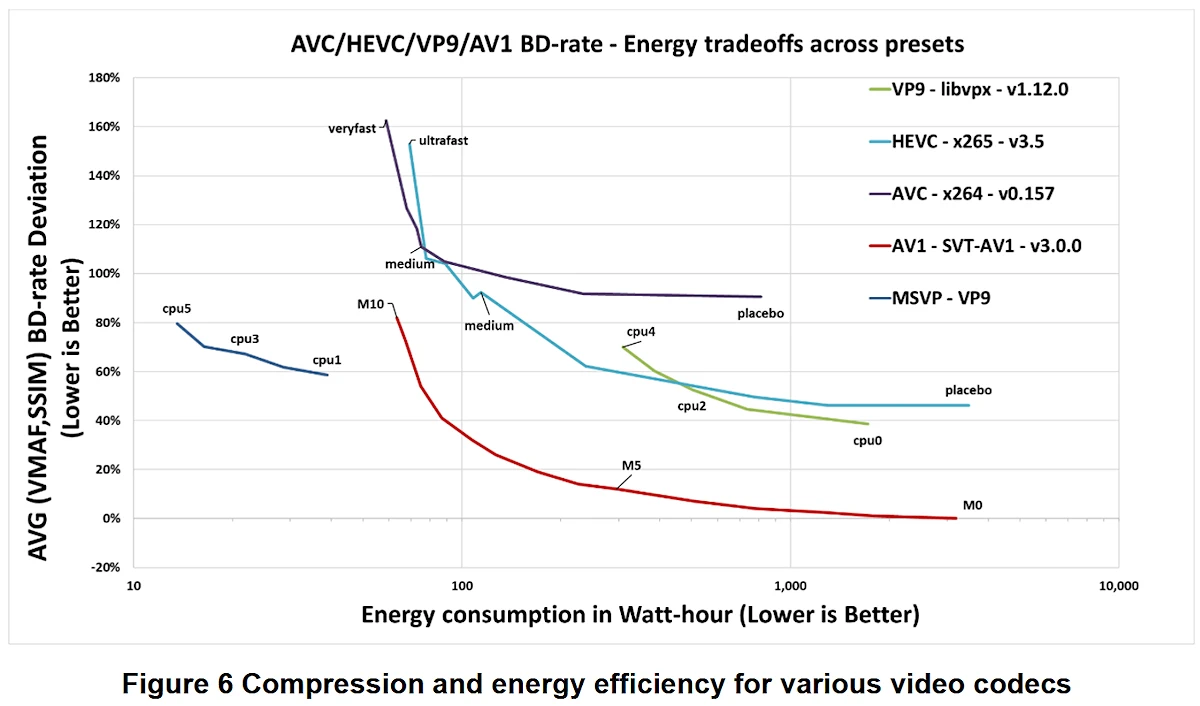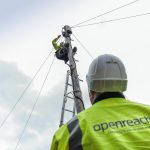Vodafone, Meta and Google Show Impact of Video Compression on Mobile Networks

British-registered mobile operator Vodafone has today published a new white paper with Meta and Google, which shows the benefits of advanced video compression technology, via the AV1 video codec, for Smartphone users on their mobile broadband networks. But it also notes that many people use budget handsets, which often lack full support it.
Just for context. Modern video codecs and compression algorithms tend to get more sophisticated and thus effective over time, partly because they’re also able to take advantage of ever more sophisticated computer processors (CPU). The benefit of this is that you can squeeze more data (i.e. higher quality video streams) into smaller packets (e.g. streaming services often recommend speeds of 20Mbps+ for a 4K video, but some years ago it was more like 50Mbps+).
So not only do advancements in video codecs result in the ability to push higher quality video streams over slower broadband connections, but doing so also means a lower capacity demand for fixed broadband and mobile networks (Content Delivery Networks also have a big role to play by caching content closer to users). This is particularly important when you consider that 70-80% of all mobile data traffic comes from video.
Advertisement

The new white paper helps to illustrate the real-world impact of this. But it also highlights how most mobile phones in use today across Europe are lower tier handsets (priced less than £220), which often lack the necessary codec support – particularly built-in hardware – to decompress such content to deliver a buffer-free video experience. Software decoding (SVT-AV1) is often still possible, but not always, and tends to use more battery power.
“The situation is only marginally better with mid-tier handsets. Low and mid-tier handsets account for around 75% of handset sales globally,” said Vodafone.

Advertisement
The paper notes that there has been increased AV1 adoption at the top of the middle tier price range, both on iOS and Android, through recently released phones such as the iPhone 16e, OnePlus 12R, etc. These phones are generally based around higher end SoCs (computer chips) such as the Apple A18 or Qualcomm Snapdragon 8.
In future, hardware decoder availability within middle tier SoCs, such as the MediaTek Dimensity 6000 and 7000 series, Qualcomm Snapdragon 6, or Samsung Exynos 1500 line, is also expected to be a positive development for the industry. But the paper highlights the importance of ensuring the widest adoption to help bandwidth, boost video quality and keep battery usage down to a minimum.
Mark is a professional technology writer, IT consultant and computer engineer from Dorset (England), he also founded ISPreview in 1999 and enjoys analysing the latest telecoms and broadband developments. Find me on X (Twitter), Mastodon, Facebook, BlueSky, Threads.net and Linkedin.
Advertisement
Leave a Reply Cancel reply
Privacy Notice: Please note that news comments are anonymous, which means that we do NOT require you to enter any real personal details to post a message and display names can be almost anything you like (provided they do not contain offensive language or impersonate a real person�s legal name). By clicking to submit a post you agree to storing your entries for comment content, display name, IP and email in our database, for as long as the post remains live.
Only the submitted name and comment will be displayed in public, while the rest will be kept private (we will never share this outside of ISPreview, regardless of whether the data is real or fake). This comment system uses submitted IP, email and website address data to spot abuse and spammers. All data is transferred via an encrypted (https secure) session.






















































It’d be interesting to see what the battery consumption is across codecs (in hardware, and in software), yeah it might save bandwidth but that kit is lit and operational anyway. Sending traffic down a connection that’s already up is marginal in difference.
What’s the additional power consumption of the consuming device? it feels like celebration of distributing that requirement (and cost) to the consumer to me, unless I’m missing something? Yes it has a happy side effect of things work without buffering on a poorer connection, but you end up paying for it rather than the provider giving a better service.
Did a rough test, take it with a pinch of salt. Nvidia instant replay / video capture encode on my RTX 4090. 1440p@60, 75Mbps. AV1 uses a constant 9% of NVENC and roughly 0.8W, x264 uses a constant 13% and roughly 1.2W. Obviously not a phone but same hardware for both types.
YouTube and Instagram should rather fix their implementation of this in their apps to prevent random overheating and battery drain